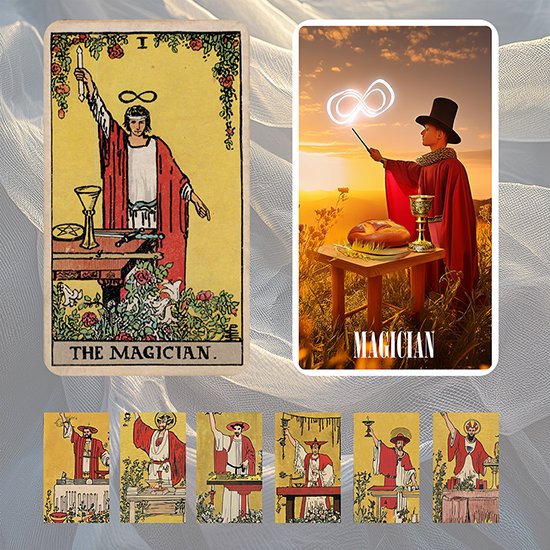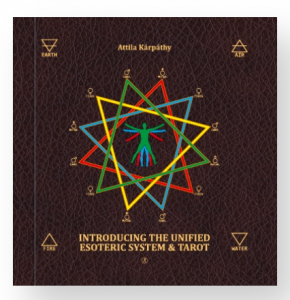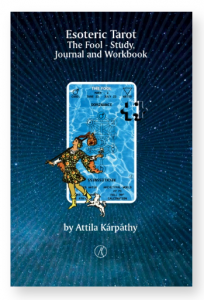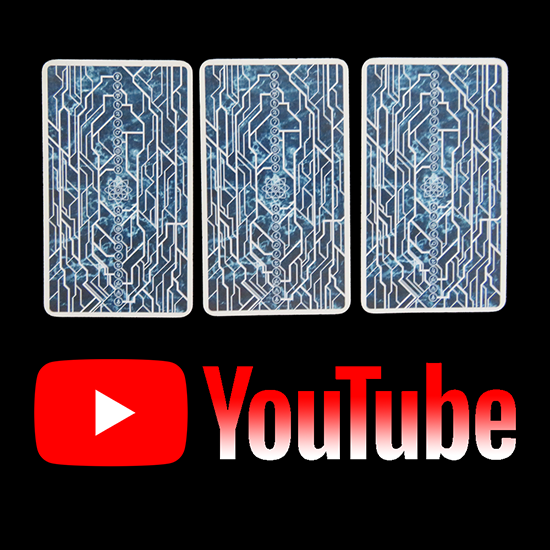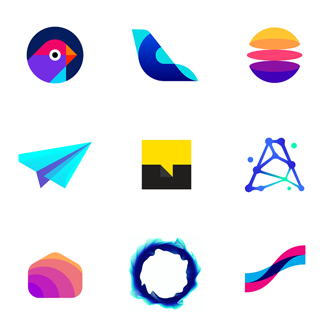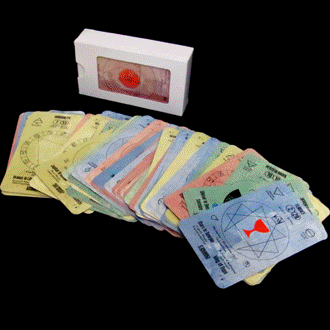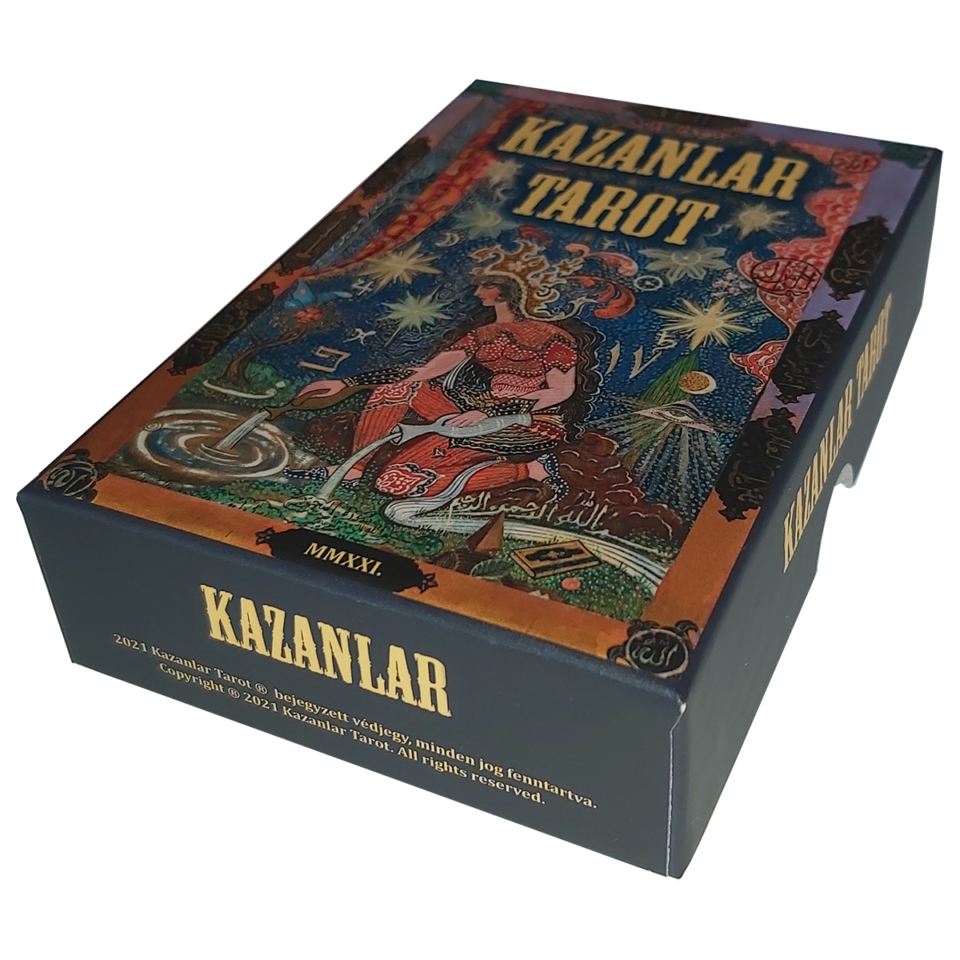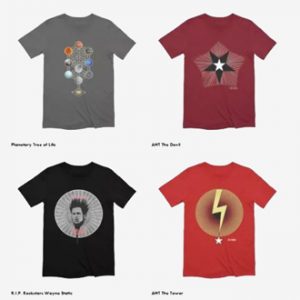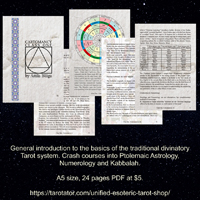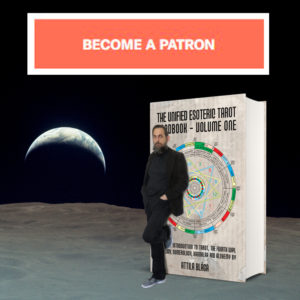The article is more than a discussion about the uprising AI technology—it also dwells on the secrets of the Magician card. I believe it is worth your time and effort to read it.
Artists and graphic designers involved in creating Tarot decks are especially vocal against using Artificial Intelligence (AI) technology. They mainly argue that unqualified people are now capable of creating artwork of questionable quality.
I find their argument at least funny, as I always question the qualifications of most artists to create Tarot decks.
On the other hand, the topic somewhat reminds me of when the first digitally created decks appeared, and artists painting and manually drawing their decks considered them tasteless and unacceptable.
From a scholarly point of view, I’m more interested in the content of a Tarot deck than the creative process and tools used in its conception.
Although the aesthetic criteria might be decisive from a commercial perspective, we often forget that the Tarot is a sensitive instrument for divination, and its esoteric content and quality are critical.
The Tarot is a language of symbols. The challenge for any serious Tarot creator is to learn, understand, and rightfully transpose those symbols into the appropriate cards. In these circumstances, AI technology can be an effective tool for creating meaningful Tarot cards – even for people who are less artistically gifted or trained for the graphical execution of the task. Good taste can be cultivated, and proportions, perspective and colour theory can be learned. In any field, knowledge and the will to learn makes the difference between amateurs and professionals.
The “Tarot of the Everlasting Day” is an AI-generated Tarot deck produced by Marcus Katz. He used the AI application Midjourney to create the Tarot deck.
The Tarot of the Everlasting Day is based on the Rider-Waite cards, considered the “Tarot template” for most modern decks. According to Katz, this structure gives readers “readily recognised scenes” suitable for beginners. The deck includes a total of 80 Minor Arcana cards (two sets of 40 cards), which provides for a “scenic set” of pictorial illustrations as well as a “pip set” similar to traditional suit pips. Additionally, the deck includes the 22 Major Arcana cards, an alternative Empress card, and nine unique cards that fit into Katz’s own Tarot system called “Tarosophy”.
When scholars with extended knowledge, such as Marcus Katz, choose to use AI technology to transpose their knowledge into images, perhaps we all should pay attention.
The process of using AI to generate artwork is known as “prompt-craft”, where the creator provides prompts in a chat-like fashion to the AI to generate the desired result.
Just for the record, I have vast experience in painting with oil and acrylic paints, painted and sold over 500 paintings worldwide, and I also worked as a professional graphic designer, being familiar with several graphic design instruments such as CorelDraw, Adobe Photoshop, Adobe Illustrator and Adobe InDesign.
I currently own an Adobe Creative Cloud subscription, and the latest Adobe Photoshop includes AI technology.
Most of the opponents of the new technology argue that AI is cheating, and while they spent months or years working on their decks, not to mention the learning process of using traditional digital technology, with AI “prompt-craft”, someone can create a Tarot card within minutes.
It is not entirely accurate. AI technology is a different kind of beast.
One can obtain fast results, but those are not necessarily the best outcomes.
Additionally, to the “prompt-craft” method, several AI can operate based on reference images. Usually, AI creates and proposes more alternatives to choose from and further develop. It is a process – not instant “magick” (gratification).
Then again, what I believe is critical is the knowledge base.
On the other hand, what the handlers know about the Tarot and what (esoteric) content they intend to create, and on the other hand, how prepared they are to deal with AI technology.
Creating a Tarot deck is not primarily about fabricating fabulous images but about genuine esoteric content. The Tarot deck is not a collection of postcards or artistic illustrations but an instrument for divination. It is a matter of functionality and efficiency, while the aesthetic criteria are secondary.
However, the last fifty years transformed the Tarot from an esoteric tool into a commercial product –often with no esoteric content and without practical relevance. Something extraordinary has been reduced to ordinary.
Will using AI technology increase the number of worthless (and, in many cases, tasteless) decks?
Definitively.
Yet, it doesn’t really matter what method some people use to produce a Tarot deck as long as they lack the knowledge to create genuine esoteric Tarot decks.
Most people who oppose AI technology fail to understand that the main issue is not the method by which a deck is produced but the lack of knowledge of those creating decks nowadays. It doesn’t make a difference if someone hand draws and paints or uses traditional digital art technologies or AI technology as long as they lack the understanding and knowledge required to produce genuine Tarot decks.
The purpose of the artwork is to depict esoteric concepts in the best possible way that improves the functionality and efficiency of a deck.
For one last time, it is not the artwork but the content that really matters. The visual aspect of a deck has mainly – if not exclusively – commercial relevance and sell (or not) a deck.
The current AI technology still lacks accuracy, and the images often have distinctive flaws. Undoubtedly, this technology improves gradually and at a fast pace. With each new image produced, AI is learning and developing.
However, AI technology will never become truly creative and innovative – by nature, it only compiles and rearranges existing images and concepts. As a result, it will never be able to replace the human thinking process, imagination, innovation and genuine creativity.
On the other hand, in my opinion, it can be used creatively to produce unique, innovative and authentic Tarot decks. It depends on the creator’s knowledge and understanding of the Tarot, not the technology and working process.
For example, let’s analyse the Magician card a little bit.
The so-called Rider-Waite Tarot serves as the blueprint for most modern – commercial – Tarot decks.
The vast majority of creators re-interpreted, altered and adapted the depiction of the cards from the Rider-Waite deck to their own needs. As a result, while many modern decks propose different themes, underneath, they are designed on the Rider-Waite iconography.
According to Arthur Edward Waite, the Magician “signifies the divine motive in man, reflecting God, the will in the liberation of its union with that which is above”.
His instructions to Pamela Colman Smith were: “A youthful figure in the robe of a magician, having the countenance of divine Apollo, with a smile of confidence and shining eyes. Above his head is the mysterious sign of the Holy Spirit, the sign of life, like an endless cord, forming the figure 8 in a horizontal position (infinity symbol). About his waist is a serpent cincture, the serpent appearing to devour its own tail. This is familiar to most as a conventional symbol of eternity, but here, it indicates more especially the eternity of attainment in the spirit. In the Magician’s right hand is a wand raised towards heaven, while the left hand is pointing to the earth. This dual sign is known in very high grades of the Instituted Mysteries; it shows the descent of grace, virtue and light, drawn from things above and derived to things below. The suggestion throughout is, therefore, the possession and communication of the Powers and Gifts of the Spirit. On the table in front of the Magician are the symbols of the four Tarot suits, signifying the elements of natural life, which lie like counters before the adept, and he adapts them as he wills. Beneath are roses and lilies, the flos campi (Latin for ‘flower of the field’) and lilium convallium (Latin for ‘Lily of the valley’), changed into garden flowers to shew the culture of aspiration.”
Waite indicates a specific posture and several symbols.
The gesture of the arms invokes the famous “As above so below”, representing the individual connecting heaven and earth.
“As above, so below” is the second verse of the Emerald Tablet, an influential Hermetic text from the late eighth or early ninth century. It may suggest the beginning of the learning process, which also matches the Magician’s “youthful figure”.
(Yet, most readers, disregarding the graphical clues and lacking the theoretical knowledge, interpret the Magician literally as a fully developed, all-knowing Magician and not the apprentice, someone at the beginning of the learning process.)
The white robe also suggests purity and a new beginning, while the red mantle indicates energy and passion.
The same red-and-white combination is featured with the red roses and white lilies, suggesting success and happiness.
One of the main issues is we take everything for granted.
Were Edward Arthur Waite and Pamela Colman Smith right and accurate?
The artwork produced by Pamela Colman Smith was knowledge-based and the result of elaborate studies, or was it the product of momentary inspiration?
Considering the short time at her disposal to draw and paint all the seventy-eight cards, Pamela Colman Smith most likely worked intuitively and mechanically. She probably composed the cards based mainly on her graphic experience and native talent, respectively, the little guidance offered by A. E. Waite.
While the Minor Arcana cards were created based on the meanings associated with the cards by Etteila, the Major Arcana was inspired by the Tarot of Marseille. However, Waite instructed Pamela Colman Smith to depart as much as possible from the Marseille pattern and remove the Christian symbolism.
Significant differences exist between the depiction of the Magician in the Marseille Tarot and the Rider-Waite deck.
Several versions of the Tarot of Marseille have been created since the mid-1500s and are used primarily for playing card games.
Using the Tarot of Marseille for occult purposes is a relatively new practice, and various authors proposed slightly different interpretations.
According to Alexandro Jodorowsky, the Magician contains the whole potential, indicating that all is possible. He stated, “The Magician is an androgynous individual working with light and shadow, juggling from the unconscious to the superconscious.”
Another point of view is that the Magician is a street conjurer, a juggler, a sleight-of-hand artist, a popular showman, or, sometimes, a charlatan. It is a standard interpretation in the context of the fifteenth century.
One of the best references is Hieronymus Bosch’s painting called The Conjurer, executed around 1502. The conjurer in the painting captures his audience with a game of cups and balls. Bosch depicts the conjurer as a common criminal, luring in the prey. Elina Gertsman noted that “the table between the magician and his victim is set with various paraphernalia—beakers, balls, and a wand.”
I asked ChatGP what objects are on the table in Hieronymus Bosch’s painting The Conjurer and what do they represent?
As this is frequently the case, the AI’s answer was detailed but inaccurate. It is not a perfect research tour, yet it can offer a good starting point.
– Cups and Balls: These are tools of the magician’s trade used for performing tricks. They symbolise deception and sleight of hand, suggesting that things are not always as they seem.
– Purse or money bag: This object represents greed and the lure of wealth, often blinding people to deceit. The purse being taken from the spectator’s pocket emphasises how easily people can be robbed while distracted.
– Books and scrolls: These can be interpreted as symbols of knowledge, but in the context of the magician, they suggest false or misleading knowledge, hinting at trickery and the manipulation of wisdom.
– Coins: Representing wealth and materialism, the coins also underline the theme of deceit as the magician often uses them in tricks to distract and deceive the audience.
– Magic wand: This is a standard tool for a magician, symbolising the power of illusion and the ability to manipulate reality.
– Egg: The eggs often symbolise fertility and creation, but in the context of a magic trick, they can also represent the unexpected and the hidden. They emphasise the notion of surprise and the uncovering of hidden truths.
– Playing cards: These can symbolise chance and fate. In the hands of the magician, they again represent trickery and the manipulation of probability to deceive.
Regarding the objects on the table and their significance, opinions are widely divided among the Tarot of Marseille scholars.
According to Alexandro Jodorowsky, “three dice on the table, each of which shows three sides: 1, 2, and 4. Each die, therefore, gives us a value of 7, and if we add all three dice together, we get 21, which is the numerical value of the highest of the Major Arcana, The World”. Also, there are four objects: a pentacle, a wand, a knife and a cup, representing the Four Elements and the four suits.
According to another scholar, Yoav Ben-Dov, “Some tools on the table are more recognisable than others”. The recognisable ones are a cup, a knife, and the circles resembling coins. We can distinguish the symbols of the four suits with the wand in the Magician’s hand.
Stav Apple proposes an entirely different explanation. “On the table are the tools needed for a circumcision: a prayer book open to the benediction for the rite of circumcision; a knife and its sheath for the cutting of the foreskin; ceremonial wine; spice; a small dish of sand; and a shield to protect the internal organ of the penis”.
He also explains the symbolism of the three dice. “Eight spots on top of the dice for the eighth day of life on which a circumcision is conducted. Fifteen total spots on the dice for a shortened version of the highest name of the LORD G_d with which the world was created”.
As you can see, our options are virtually unlimited.
Creating a new Tarot deck is not about copying any existing patterns mechanically (unconsciously) but about studying and understanding them and creating something new and representative.
If one starts by re-designing an existing graphic pattern, it is crucial to understand all the elements depicted and their meaning.
However, a much better way to start is from a blank canvas. Learn and understand what gives each of the cards their meaning and how all the cards in the deck relate to each other. It is both a learning process and a mystical experience.
It doesn’t matter what technique and technology someone uses to produce something as long as the outcome is an original and meaningful creation.
Regarding the Tarot decks, the (esoteric) content is more relevant than the graphical execution and expression. We have forgotten that it is a spiritual instrument dealing with the invisible, the unseen world – and we have paid too much attention to the external – material – matters.
#attilakarpathy #tarot #AI #esoteric

